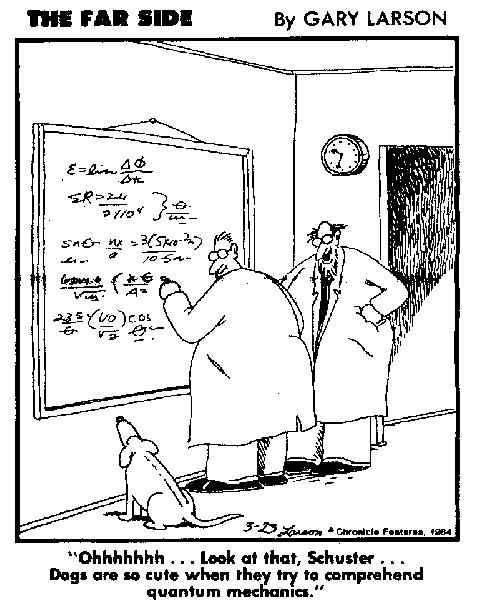 The simulation hypothesis is perhaps a bit more interesting than how to add clusters of neural network nodes to do a simple reference resolution task, but it is also less testable. This is the nature of big questions since they would otherwise have been resolved by now. Nevertheless, some theory and experimental analysis has been undertaken for the question of whether or not we are living in a simulation, all based on an assumption that the strangeness of quantum and relativistic realities might be a result of limited computing power in the grand simulator machine. For instance, in a virtual reality game, only the walls that you, as a player, can see need to be calculated and rendered. The other walls that are out of sight exist only as a virtual map in the computer’s memory or persisted to longer-term storage. Likewise, the behavior of virtual microscopic phenomena need not be calculated insofar as the macroscopic results can be rendered, like the fire patterns in a virtual torch.
The simulation hypothesis is perhaps a bit more interesting than how to add clusters of neural network nodes to do a simple reference resolution task, but it is also less testable. This is the nature of big questions since they would otherwise have been resolved by now. Nevertheless, some theory and experimental analysis has been undertaken for the question of whether or not we are living in a simulation, all based on an assumption that the strangeness of quantum and relativistic realities might be a result of limited computing power in the grand simulator machine. For instance, in a virtual reality game, only the walls that you, as a player, can see need to be calculated and rendered. The other walls that are out of sight exist only as a virtual map in the computer’s memory or persisted to longer-term storage. Likewise, the behavior of virtual microscopic phenomena need not be calculated insofar as the macroscopic results can be rendered, like the fire patterns in a virtual torch.
So one way of explaining physics conundrums like delayed choice quantum erasers, Bell’s inequality, or ER = EPR might be to claim that these sorts of phenomena are the results of a low-fidelity simulation necessitated by the limits of the simulator computer. I think the likelihood that this is true is low, however, because we can imagine that there exists an infinitely large cosmos that merely includes our universe simulation as a mote within it. Low-fidelity simulation constraints might give experimental guidance, but the results could also be supported by just living with the indeterminacy and non-locality as fundamental features of our universe.
It’s worth considering, however, what we should think about the nature of the simulator given this potentially devious (and poorly coded) little Matrix that we find ourselves trapped in? There are some striking alternatives. To make this easier, I’ll use the following abbreviations:
S = Simulator (creator of simulation)
U = Simulation
SC = Simulation Computer (whatever the simulation runs on)
MA = Morally Aware (the perception, rightly or wrongly, that judgments and choices influence simulation-level phenomena)
US = Simulatees
CA = Conscious Awareness (the perception that one is aware of stuff)
So let’s get started:
- S is unaware of events in U due to limited monitoring resources.
- S is unaware of events in U due to lack of interest.
- S is incapable of conscious awareness of U (S is some kind of automatic system).
- It seems unlikely that limited monitoring resources would be a constraint given the scale and complexity of U because they would be of a lower cost than U and simply tuned to filter active categories of interest, so S must either lack interest (2) or be incapable of awareness (3).
- We can dismiss (3) due to an infinite regress on the nature of the simulator in general, since the origin of the Simulation Hypothesis is the probability that we humans will create ever-better simulations in the future. There is no other simulation hypothesis that involves pure automation of S lacking CA and some form of MA.
- Given (2), why would S lack interest in U? Perhaps S created a large ensemble of universes and is only interested in long-term outcomes. But maybe S is just a putz.
- For (6), if S is MA, then S is wrong to create U that supports the evolution of US insofar as S allows for CA and MA in US combined with radical uncertainty in U.
- Conclusion: S is a putz or this ain’t a simulation.
Theists can squint and see the problem, here. We might add 7.5: it’s certainly wrong of S to actively burn, drown, imprison, enslave, and murder CA and MA US. If S is doing 7.5, that makes S a superputz.
In my novel, Teleology, the creation of another simulated universe by a first one was a religious imperative. The entities saw, once in contact with their S, that it must be the ultimate fulfillment of purpose for them to become S. Yet their S was very concerned with their U and would have objected to even cleanly pulling the plug on their U. He did lack instrumentation (1) into U, but built a great deal of it after discovering that there was evidence of CA. He was no putz.